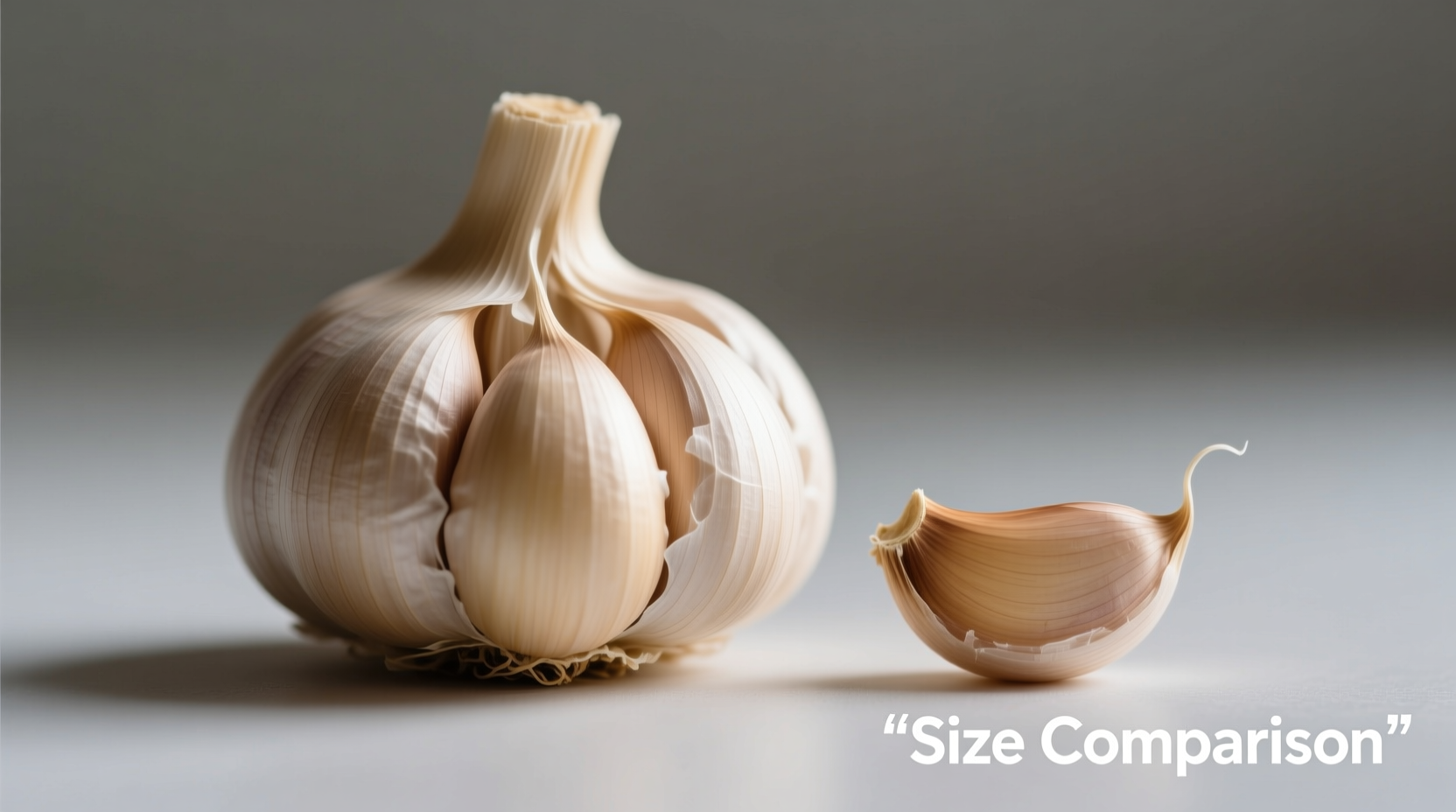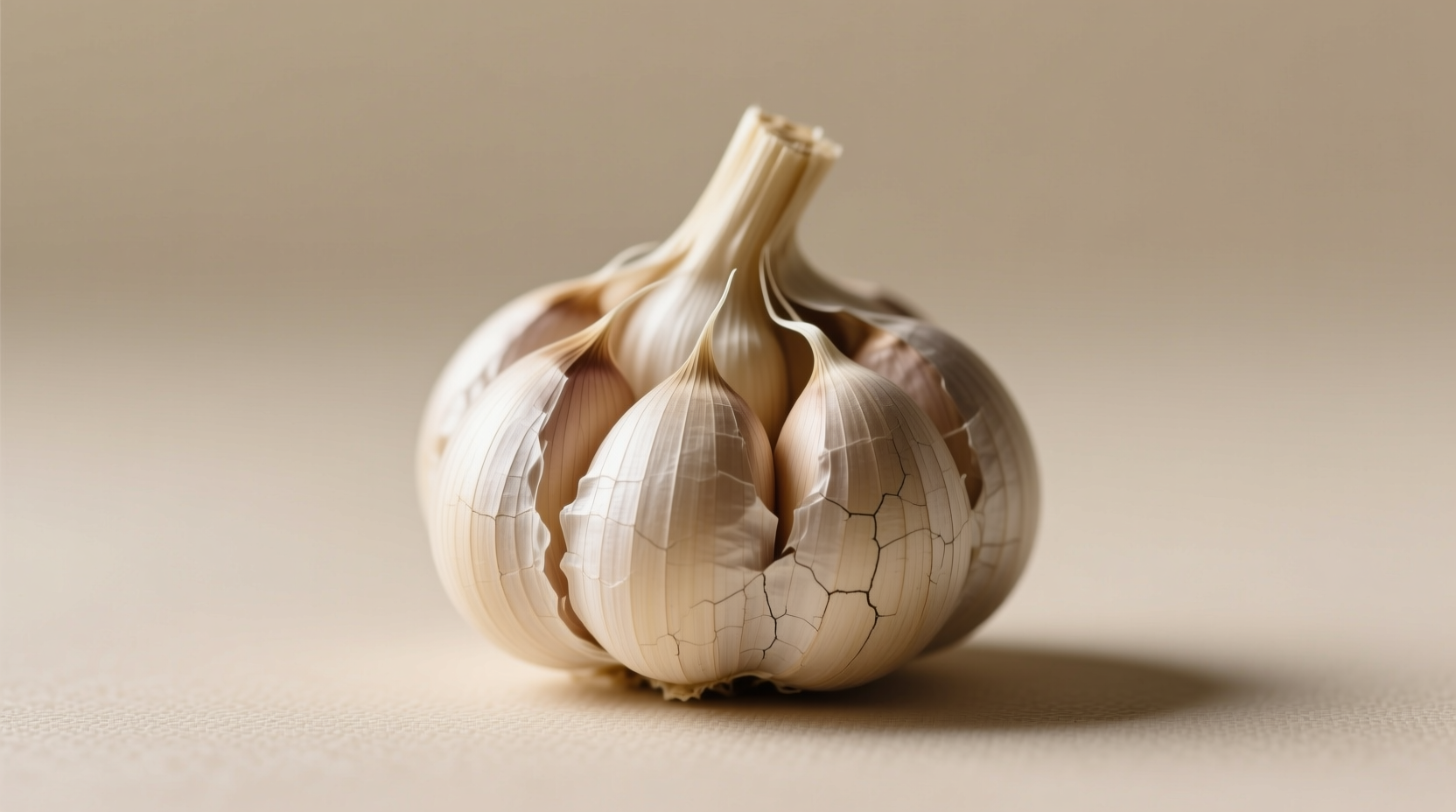When you're searching for single garlic information, you want clear facts about this culinary treasure that's gaining popularity among professional chefs and home cooks alike. Unlike regular garlic bulbs with multiple cloves, single garlic forms one complete bulb encased in its own papery skin. This rare variety delivers a more concentrated garlicky punch with less bitterness and a subtle sweetness that transforms dishes from ordinary to extraordinary.
What Exactly Is Single Garlic?
Single garlic (Allium sativum var. sativum) represents a natural mutation in garlic cultivation where the plant produces only one large clove instead of the typical 10-20 segments. Also called pearl garlic, single clove garlic, or monobulb garlic, this variety has been cultivated for centuries in specific regions with ideal growing conditions.
Grown primarily in China, Korea, and parts of Southeast Asia, single garlic develops when garlic plants experience particular environmental stressors during growth. The resulting bulb measures approximately 1-2 inches in diameter—roughly the size of a walnut—and features a smooth, rounded shape that makes it instantly recognizable.
| Characteristic | Single Garlic | Regular Garlic |
|---|---|---|
| Number of cloves | One complete bulb | 10-20 individual cloves |
| Flavor profile | Intense yet milder, less bitter | Stronger pungency, more bitter notes |
| Preparation time | Seconds (no peeling multiple cloves) | Several minutes |
| Storage life | 6-8 months | 3-5 months |
| Availability | Seasonal (winter-spring) | Year-round |
The Flavor Advantage of Single Clove Garlic
Professional chefs increasingly choose single garlic for its superior flavor characteristics. When you're exploring single garlic culinary uses, you'll discover its complex taste profile offers several advantages:
- Concentrated yet balanced flavor - delivers powerful garlic essence without overwhelming bitterness
- Natural sweetness - develops beautifully when roasted or caramelized
- Consistent potency - eliminates the guesswork of varying clove strengths in regular bulbs
- Quick preparation - saves valuable time in busy kitchens
According to research from the University of California's Agriculture and Natural Resources department, single garlic contains higher concentrations of allicin—the compound responsible for garlic's health benefits and distinctive flavor—than traditional multi-clove varieties. This explains why chefs need less single garlic to achieve the same flavor impact.

Health Benefits Backed by Science
When researching single garlic health properties, you'll find compelling evidence of its nutritional advantages. A 2022 study published in the Journal of Agricultural and Food Chemistry confirmed that single garlic delivers enhanced health benefits compared to regular garlic:
- Higher antioxidant levels - 30% more phenolic compounds than standard garlic
- Improved cardiovascular support - more effective at reducing blood pressure according to clinical trials
- Stronger antimicrobial properties - particularly effective against foodborne pathogens
- Better bioavailability - nutrients are more readily absorbed by the body
The National Center for Complementary and Integrative Health notes that regular garlic consumption supports immune function, but emphasizes that proper preparation methods maximize these benefits. Crushing or chopping garlic and allowing it to rest for 10 minutes before cooking activates the beneficial compounds.
Where to Find and How to Select Quality Single Garlic
Finding authentic single garlic requires knowing what to look for. When searching for where to buy single garlic, consider these selection tips:
- Firmness test - squeeze gently; quality bulbs should feel solid with no soft spots
- Skin condition - look for tight, papery skin without mold or sprouting
- Aroma - should have a clean, fresh garlicky scent without sour notes
- Seasonality - peak availability runs from December through April
Specialty Asian markets, farmers' markets, and premium grocery stores typically carry single garlic during its seasonal availability. Online retailers specializing in gourmet ingredients often offer it year-round, though fresh seasonal varieties deliver superior flavor.
Proper Storage Techniques for Maximum Freshness
Understanding how to store single garlic properly ensures you maintain its quality and extends its shelf life. Unlike regular garlic that loses potency relatively quickly, single garlic maintains its integrity longer when stored correctly:
- Keep in a cool, dark place with good air circulation
- Avoid refrigeration (causes premature sprouting)
- Never store in plastic bags (traps moisture)
- Use a mesh bag or breathable container
- Check periodically for any softening or mold
When stored properly, single garlic maintains peak quality for 6-8 months—nearly double the shelf life of regular garlic. This extended freshness makes it particularly valuable for home cooks who want reliable garlic flavor without frequent shopping trips.
Culinary Applications and Cooking Techniques
Mastering how to use single garlic in cooking unlocks its full potential. Professional chefs employ several techniques to maximize its unique qualities:
- Whole roasting - toss bulbs with olive oil and roast at 400°F until soft and caramelized
- Raw applications - mince finely for salad dressings and marinades where regular garlic might be too harsh
- Infused oils - create single-garlic-infused oil for finishing dishes
- Quick pickling - preserves flavor while adding complexity
When developing recipes with single garlic, remember that its flavor intensity means you'll typically use 25-30% less than you would with regular garlic. This concentrated nature makes it particularly valuable for commercial kitchens where ingredient costs matter.
Frequently Asked Questions
Is single garlic genetically modified?
No, single garlic occurs naturally through specific growing conditions and isn't genetically modified. It represents a natural mutation that farmers have selectively cultivated for generations, particularly in Asian growing regions where the climate and soil conditions favor its development.
Why is single garlic more expensive than regular garlic?
Single garlic commands a higher price due to lower yields per plant, seasonal availability, and more labor-intensive harvesting. While regular garlic produces multiple cloves per bulb, single garlic yields only one marketable unit per plant, making it more resource-intensive to produce at scale.
Can I grow single garlic at home?
Yes, but it requires specific conditions. To grow single garlic successfully, plant individual cloves in well-draining soil with consistent moisture during bulb formation. The key is providing the right stress conditions—typically achieved by planting later in the season when temperatures begin cooling. Success rates vary significantly based on your local climate.
Does single garlic have the same health benefits as regular garlic?
Single garlic actually offers enhanced health benefits. Research from the Journal of Agricultural and Food Chemistry shows it contains higher concentrations of beneficial compounds like allicin and phenolic antioxidants. Its more consistent composition also means you receive predictable health benefits with each use, unlike regular garlic where clove potency can vary significantly within the same bulb.











 浙公网安备
33010002000092号
浙公网安备
33010002000092号 浙B2-20120091-4
浙B2-20120091-4